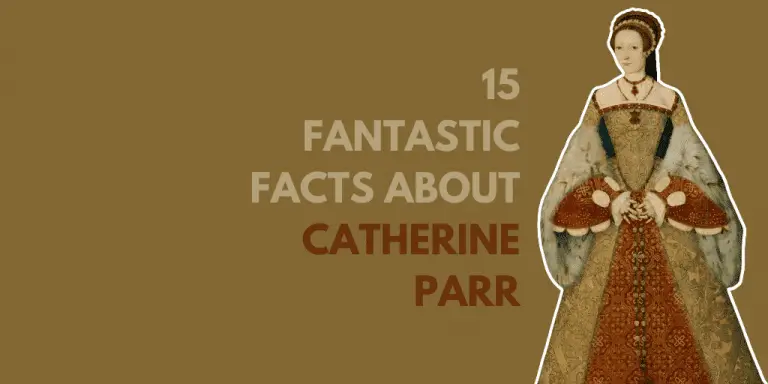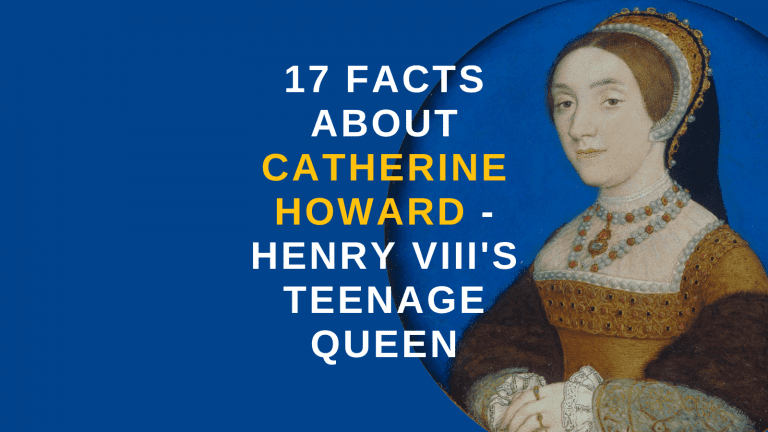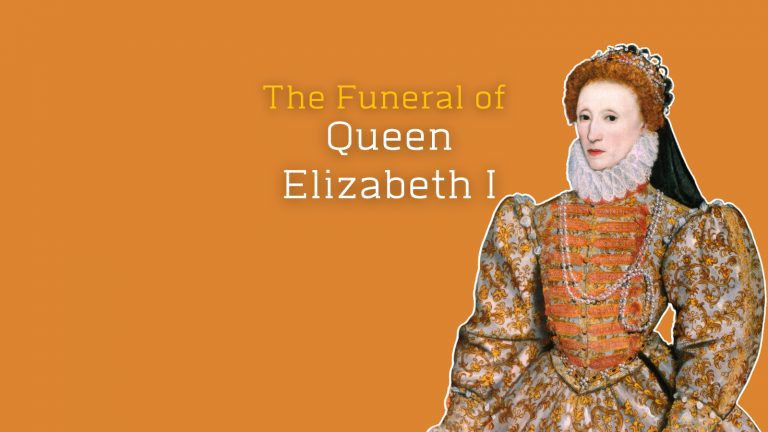The prisons of Mary Queen of Scots
Mary Queen of Scots was held prisoner on the orders of Queen Elizabeth I of England between May 1568 and her execution on the 8th of February 1587.
During that time, Mary Stuart was held in numerous different residences. She was always a focus for Catholic uprisings so moving her from location to location made perfect sense. Some were more secure than others. She was moved around the country depending on the current circumstances of the day. When the northern rebellion took place, she was moved to more secure locations in the Midlands, away from her traditional support in the north of England.
However, when we say the word “prison”, we have to be clear the Scottish queen was not held in a traditional prison cell. There were no iron bars up against the windows, and she certainly wasn’t fed gruel.
For much of her period of incarceration, she virtually held court. She was allowed out to ride, to hunt, and she would enjoy splendid banquets. In the evening, she would play cards, gamble, partake of embroidery and enjoy dancing. She practically bankrupted her principal jailor, George Talbot, the Earl of Shrewsbury, in the process as he attempted to keep her in the style she expected.
However, despite the apparent comforts that many of her prisons afforded her, she was still not at liberty to do as she wished.
As a result, she came to detest many of the places she had to call home.
So which were the houses and castles that Mary Queen of Scots was imprisoned in?
[/et_pb_text][/et_pb_column][/et_pb_row][et_pb_row _builder_version=”4.7.7″ _module_preset=”default”][et_pb_column type=”4_4″ _builder_version=”4.7.7″ _module_preset=”default”][et_pb_text _builder_version=”4.7.7″ _module_preset=”default” hover_enabled=”0″ sticky_enabled=”0″]Mary’s First Prison – Lochleven Castle
[/et_pb_text][/et_pb_column][/et_pb_row][et_pb_row _builder_version=”4.7.7″ _module_preset=”default”][et_pb_column _builder_version=”4.7.7″ _module_preset=”default” type=”4_4″][et_pb_image src=”http://historywithhenry.com/wp-content/uploads/2021/11/Screenshot-53.png” _builder_version=”4.7.7″ _module_preset=”default” hover_enabled=”0″ sticky_enabled=”0″ alt=”The prisons of Mary Queen of Scots ” title_text=”Lochleven Castle” align=”center” width=”75%”][/et_pb_image][/et_pb_column][/et_pb_row][et_pb_row _builder_version=”4.7.7″ _module_preset=”default”][et_pb_column type=”4_4″ _builder_version=”4.7.7″ _module_preset=”default”][et_pb_text _builder_version=”4.7.7″ _module_preset=”default”]Mary Queen of Scots’ first prison wasn’t in England but Scotland. Here she wasn’t detained on the orders of the English Queen but of her own subjects.
Many of the protestant lords, including mary’s illegitimate half-brother, were appalled at her supposed hand in the murder of her second husband, Henry Stuart, Lord Darnley. They rose in rebellion against her.
After Queen Mary had surrendered to the protestant lords after the Battle of Carberry Hill on the 15th of June 1567, she was taken to Lochleven Castle. Her final husband, James Hepburn, Earl of Bothwell had fled the field, leaving his wife in the hands of
This was believed to be a very secure location as the castle was situated on a small island in the middle of the loch. It was the ultimate castle moat!
It was here that she miscarried twins and was forced to abdicate the Scottish throne in favour of her infant son, James.
However, Mary was resourceful. She had no intention of staying in Scotland as a prisoner, so she made attempts to escape. The problem was she didn’t just have to get outside the Castle walls but over the loch. Mary Queen of Scot’s first escape attempt was to disguise herself as a laundrywoman. She got as far as being rowed ashore when the boatman realised he recognised her and took her back to the island.
After engaging the help of a pair of young brothers, Willie Douglas and George Douglas, she successfully managed to escape on the 2nd of May 1568. After a brief, unsuccessful attempt to regain the Scottish throne, she fled to England.
She escaped one prison but ended up in another.
[/et_pb_text][/et_pb_column][/et_pb_row][et_pb_row _builder_version=”4.7.7″ _module_preset=”default”][et_pb_column type=”4_4″ _builder_version=”4.7.7″ _module_preset=”default”][et_pb_text _builder_version=”4.7.7″ _module_preset=”default”]Carlisle Castle
[/et_pb_text][/et_pb_column][/et_pb_row][et_pb_row _builder_version=”4.7.7″ _module_preset=”default”][et_pb_column _builder_version=”4.7.7″ _module_preset=”default” type=”4_4″][et_pb_image src=”http://historywithhenry.com/wp-content/uploads/2021/11/Carlisle_Castle.jpg” _builder_version=”4.7.7″ _module_preset=”default” alt=”The prisons of Mary Queen of Scots ” title_text=”Carlisle_Castle” hover_enabled=”0″ sticky_enabled=”0″ align=”center” width=”75%”][/et_pb_image][/et_pb_column][/et_pb_row][et_pb_row _builder_version=”4.7.7″ _module_preset=”default”][et_pb_column type=”4_4″ _builder_version=”4.7.7″ _module_preset=”default”][et_pb_text _builder_version=”4.7.7″ _module_preset=”default”]Mary was taken into English custody for her own protection. The reality was she had a strong claim on the English throne, and Elizabeth saw her as a threat. As time went on, that threat became more pronounced as Mary became actively involved in efforts to assassinate her cousin.
Mary Queen of Scots first real prison in England was Carlisle Castle. Mary was held here between May and July 1568. She was housed in the Warden’s Tower, which was demolished in 1835. The rest of the castle remains standing.
Carlisle Castle was originally built by William II. It was a traditional Norman style motte and bailey castle built upon the site of an older Roman fort. Due to its proximity to Hadrian’s Wall and the Scottish border, it was involved in numerous conflicts between England and Scotland. The most notable of which was the Jacobite rising of 1745, where it played a crucial role in the defence of the city of Carlisle. However, this didn’t stop both the city and the castle from falling into the Jacobite hands.
After that failure, the castle fell into disrepair.
The castle is still open and can be visited, and it is managed by English Heritage.
[/et_pb_text][/et_pb_column][/et_pb_row][et_pb_row _builder_version=”4.7.7″ _module_preset=”default”][et_pb_column type=”4_4″ _builder_version=”4.7.7″ _module_preset=”default”][et_pb_text _builder_version=”4.7.7″ _module_preset=”default”]Bolton Castle
[/et_pb_text][/et_pb_column][/et_pb_row][et_pb_row _builder_version=”4.7.7″ _module_preset=”default”][et_pb_column _builder_version=”4.7.7″ _module_preset=”default” type=”4_4″][et_pb_image src=”http://historywithhenry.com/wp-content/uploads/2021/11/Bolton_Castle_at_Castle_Bolton_-_geograph.org_.uk_-_1390969-1.jpg” _builder_version=”4.7.7″ _module_preset=”default” alt=”The prisons of Mary Queen of Scots ” title_text=”Bolton_Castle,_at_Castle_Bolton_-_geograph.org.uk_-_1390969 (1)” align=”center” width=”75%” hover_enabled=”0″ sticky_enabled=”0″][/et_pb_image][/et_pb_column][/et_pb_row][et_pb_row _builder_version=”4.7.7″ _module_preset=”default”][et_pb_column type=”4_4″ _builder_version=”4.7.7″ _module_preset=”default”][et_pb_text _builder_version=”4.7.7″ _module_preset=”default”]Bolton Castle is in Yorkshire, and Mary was held here between July 1568 until February 1569
Bolton Castle was completed in the year 1399, far later than Carlisle Castle. It is an example of a later quadrangular castle. It played a key role in the Pilgrimage of Grace, the great northern uprising against the religious reforms implemented by Henry VIII.
During her time at Bolton Castle, Mary Queen of Scots had a complete retinue of 51 Knights servants and maids. Such was their number; the whole household couldn’t be accommodated at the castle, and some had to stay in the nearby town. Suitable furniture tapestries and ornaments had to be borrowed from nearby castles and houses. Elizabeth herself even provided pewter vessels and a copper kettle to make Mary’s stay more “comfortable”.
It was here, more than any other of her prisons, that Mary Stuart lived like a queen. She was allowed to go walking on the grounds and hunted at her leisure. Her jailer at this time was Francis Knollys, and he taught her to speak English.
There is a story that she actually managed to escape from the castle, but she lost her shawl along the way. Hence the name of the cliff near the castle is now known as “The Shawl.” There is probably little truth to that tale.
[/et_pb_text][/et_pb_column][/et_pb_row][et_pb_row _builder_version=”4.7.7″ _module_preset=”default”][et_pb_column type=”4_4″ _builder_version=”4.7.7″ _module_preset=”default”][et_pb_text _builder_version=”4.7.7″ _module_preset=”default”]Tutbury Castle
[/et_pb_text][/et_pb_column][/et_pb_row][et_pb_row _builder_version=”4.7.7″ _module_preset=”default”][et_pb_column _builder_version=”4.7.7″ _module_preset=”default” type=”4_4″][et_pb_image src=”http://historywithhenry.com/wp-content/uploads/2021/11/Tutbury_Castle_3_geograph_4461920.jpg” _builder_version=”4.7.7″ _module_preset=”default” alt=”The prisons of Mary Queen of Scots ” title_text=”Tutbury_Castle_(3)_(geograph_4461920)” align=”center” width=”75%” hover_enabled=”0″ sticky_enabled=”0″][/et_pb_image][/et_pb_column][/et_pb_row][et_pb_row _builder_version=”4.7.7″ _module_preset=”default”][et_pb_column type=”4_4″ _builder_version=”4.7.7″ _module_preset=”default”][et_pb_text _builder_version=”4.7.7″ _module_preset=”default”]This medieval castle stands on wooded slopes overlooking the River Dove in Staffordshire.
Construction began around 1080, and it became the headquarters of Henry de Ferrers. The castle was almost entirely destroyed by Prince Edward (The future Edward I) in 1264 following a rebellion by Robert de Ferrers. However, repairs were made in the 1300s but simply to bring it up to residential standards instead of creating a strategic military stronghold.
Mary Queen of Scots first arrived at Tutbury Castle on the 4th of February 1569. Despite the repairs 200 years ago, it was suffering from further decline and lack of investment. She immediately complained about the damp and the ill-fitting carpentry. Furnishings were supplied from the royal wardrobe at the Tower of London and from the Earl of Shrewsbury’s own private properties in Sheffield. Shrewsbury’s wife, the formidable Bess of Hardwick, was displeased her own properties were ransacked.
Mary was held at Tutbury on a number of occasions during her imprisonment. It became her most hated and detested prison.
Such were the draughts around the castle that Mary constructed a tent-like structure over her own bed-chamber in order to generate warmth.
However, despite the apparent hardships and failings of the property itself, she did have some bizarre luxuries, including a billiard table. She also went hawking down by the River Dove, with around forty guards in attendance. The practice was stopped when Elizabeth heard of it.
[/et_pb_text][/et_pb_column][/et_pb_row][et_pb_row _builder_version=”4.7.7″ _module_preset=”default”][et_pb_column type=”4_4″ _builder_version=”4.7.7″ _module_preset=”default”][et_pb_text _builder_version=”4.7.7″ _module_preset=”default”]Wingfield Manor
[/et_pb_text][/et_pb_column][/et_pb_row][et_pb_row _builder_version=”4.7.7″ _module_preset=”default”][et_pb_column _builder_version=”4.7.7″ _module_preset=”default” type=”4_4″][et_pb_image src=”http://historywithhenry.com/wp-content/uploads/2021/11/Wingfield_Manor_-_geograph.org_.uk_-_6280.jpg” _builder_version=”4.7.7″ _module_preset=”default” alt=”The prisons of Mary Queen of Scots ” title_text=”Wingfield_Manor_-_geograph.org.uk_-_6280″ align=”center” width=”75%” hover_enabled=”0″ sticky_enabled=”0″][/et_pb_image][/et_pb_column][/et_pb_row][et_pb_row _builder_version=”4.7.7″ _module_preset=”default”][et_pb_column type=”4_4″ _builder_version=”4.7.7″ _module_preset=”default”][et_pb_text _builder_version=”4.7.7″ _module_preset=”default”]This country house property in Derbyshire was one of the many homes owned by the Earl of Shrewsbury.
The Manor house was built in 1441 for Sir Ralph Cromwell, the treasurer to King Henry VI.
The property was often used when Tutbury castle or Sheffield castle needed cleaning, or there was some maintenance issue with the more secure residences. Mary would be removed together with her retinue of servants, and then a deep clean would take place at the castles. As a result, Mary stayed here on numerous occasions.
As an aside, the manor house was the first property in the country to have the first flushing toilet, built-in 1596. However, by this time, Mary Stuart was long dead.
[/et_pb_text][/et_pb_column][/et_pb_row][et_pb_row _builder_version=”4.7.7″ _module_preset=”default”][et_pb_column type=”4_4″ _builder_version=”4.7.7″ _module_preset=”default”][et_pb_text _builder_version=”4.7.7″ _module_preset=”default”]Chatsworth House
[/et_pb_text][/et_pb_column][/et_pb_row][et_pb_row _builder_version=”4.7.7″ _module_preset=”default”][et_pb_column _builder_version=”4.7.7″ _module_preset=”default” type=”4_4″][et_pb_image src=”http://historywithhenry.com/wp-content/uploads/2021/11/Chatsworth_Bridge-1-scaled.jpg” _builder_version=”4.7.7″ _module_preset=”default” alt=”The prisons of Mary Queen of Scots ” title_text=”Chatsworth_Bridge (1)” align=”center” width=”75%” hover_enabled=”0″ sticky_enabled=”0″][/et_pb_image][/et_pb_column][/et_pb_row][et_pb_row _builder_version=”4.7.7″ _module_preset=”default”][et_pb_column type=”4_4″ _builder_version=”4.7.7″ _module_preset=”default”][et_pb_text _builder_version=”4.7.7″ _module_preset=”default”]Chatsworth House in Derbyshire stands on the banks of the River Derwent. Today it is known as the quintessential English stately home; it has thousands of visitors every single year.
It was constructed and owned by Bess of Hardwick, the wife of Mary’s jailor, the Earl of Shrewsbury. Mary was held at Chatsworth on at least three separate occasions. The apartments she stayed in are now known as the Queen of Scots rooms. They are on the top floor above the Great Hall, facing onto the inner courtyard.
During Mary Queen of Scots’ stays at Chatsworth, she would be accompanied by Bess of Hardwick. They spent many evenings working together on needlework projects. The resulting work is now held at Oxburgh hall and is known as the Oxburgh Hangings.
St Mary’s Guildhall
[/et_pb_text][/et_pb_column][/et_pb_row][et_pb_row _builder_version=”4.7.7″ _module_preset=”default”][et_pb_column _builder_version=”4.7.7″ _module_preset=”default” type=”4_4″][et_pb_image src=”http://historywithhenry.com/wp-content/uploads/2021/11/St_Marys_Hall_-Coventry_-8o08-scaled.jpg” _builder_version=”4.7.7″ _module_preset=”default” alt=”The prisons of Mary Queen of Scots ” title_text=”St_Marys_Hall_-Coventry_-8o08″ align=”center” width=”44%” hover_enabled=”0″ sticky_enabled=”0″][/et_pb_image][/et_pb_column][/et_pb_row][et_pb_row _builder_version=”4.7.7″ _module_preset=”default”][et_pb_column type=”4_4″ _builder_version=”4.7.7″ _module_preset=”default”][et_pb_text _builder_version=”4.7.7″ _module_preset=”default”]Mary was moved to Coventry between November 1569 until January 1570, when the northern rebellion took place. This was the furthest south she had been imprisoned in until this point.
The castle had been her intended destination. However, on closer inspection before her arrival, it seemed that the building was in worse condition than Tutbury. She stayed at the Bull Inn on Smithfield St until suitable accommodation could be found elsewhere.
She ended up staying in the Mayoress’s Parlour in St Mary’s Guildhall. The Guildhall was built between the years 1340 and 1342. However, it was much extended 100 years later. Remarkably, despite the virtual destruction of Coventry during the Second World War, the Guildhall survived.
[/et_pb_text][/et_pb_column][/et_pb_row][et_pb_row _builder_version=”4.7.7″ _module_preset=”default”][et_pb_column type=”4_4″ _builder_version=”4.7.7″ _module_preset=”default”][et_pb_text _builder_version=”4.7.7″ _module_preset=”default”]Sheffield Castle
[/et_pb_text][/et_pb_column][/et_pb_row][et_pb_row _builder_version=”4.7.7″ _module_preset=”default”][et_pb_column type=”4_4″ _builder_version=”4.7.7″ _module_preset=”default”][et_pb_text _builder_version=”4.7.7″ _module_preset=”default”]Mary Queen of Scots was held prisoner at Sheffield at various times in 1570 and 1584.
She spent the vast majority of her incarceration in England at this site or the associated manor just outside the city.
The castle itself was built in the year 1270 on the side of a former motte and bailey castle that had been destroyed during the second barons’ war.
The castle no longer stands. It was surrendered to the parliamentarian forces during the civil war, and its demolition took place soon after.
No drawings or plans of the castle are believed to have survived. This is strange for a building that had stood for so long and played such a significant part in the story of Mary Queen of Scots.
[/et_pb_text][/et_pb_column][/et_pb_row][et_pb_row _builder_version=”4.7.7″ _module_preset=”default”][et_pb_column type=”4_4″ _builder_version=”4.7.7″ _module_preset=”default”][et_pb_text _builder_version=”4.7.7″ _module_preset=”default”]Chartley Manor
[/et_pb_text][/et_pb_column][/et_pb_row][et_pb_row _builder_version=”4.7.7″ _module_preset=”default”][et_pb_column _builder_version=”4.7.7″ _module_preset=”default” type=”4_4″][et_pb_image src=”http://historywithhenry.com/wp-content/uploads/2021/11/Chartley_Castle_2010.jpg” _builder_version=”4.7.7″ _module_preset=”default” alt=”The prisons of Mary Queen of Scots ” title_text=”Chartley_Castle,_2010″ align=”center” width=”75%” hover_enabled=”0″ sticky_enabled=”0″][/et_pb_image][/et_pb_column][/et_pb_row][et_pb_row _builder_version=”4.7.7″ _module_preset=”default”][et_pb_column type=”4_4″ _builder_version=”4.7.7″ _module_preset=”default”][et_pb_text _builder_version=”4.7.7″ _module_preset=”default”]Chartley Manor in Staffordshire, was the property of Robert Devereux, 2nd Earl of Essex, one of the favourites of Queen Elizabeth I.
Mary Queen of Scots was moved here from Tutbury Castle just before Christmas 1585. Her jailer was now Amias Paulet, and he selected the house as it had a deep moat offering a degree of protection. Interestingly, the moat also served as the place that Mary’s maids would wash her clothes without needing to leave the Manor house.
It was here that Mary Queen of Scots became entangled in the Babington Plot, and she was arrested here on the 11th of August 1586.
Only a few ruined walls now remain of the manor.
[/et_pb_text][/et_pb_column][/et_pb_row][et_pb_row _builder_version=”4.7.7″ _module_preset=”default”][et_pb_column type=”4_4″ _builder_version=”4.7.7″ _module_preset=”default”][et_pb_text _builder_version=”4.7.7″ _module_preset=”default”]Tixhall Hall
[/et_pb_text][/et_pb_column][/et_pb_row][et_pb_row _builder_version=”4.7.7″ _module_preset=”default”][et_pb_column _builder_version=”4.7.7″ _module_preset=”default” type=”4_4″][et_pb_image src=”http://historywithhenry.com/wp-content/uploads/2021/11/Tixall_Gatehouse_geograph_359954.jpg” _builder_version=”4.7.7″ _module_preset=”default” alt=”The prisons of Mary Queen of Scots ” title_text=”Tixall_Gatehouse_(geograph_359954)” align=”center” width=”75%” hover_enabled=”0″ sticky_enabled=”0″][/et_pb_image][/et_pb_column][/et_pb_row][et_pb_row _builder_version=”4.7.7″ _module_preset=”default”][et_pb_column type=”4_4″ _builder_version=”4.7.7″ _module_preset=”default”][et_pb_text _builder_version=”4.7.7″ _module_preset=”default”]Mary only stayed here for two weeks following her arrest. During this time, her apartments at Chartley Manor were thoroughly searched, and her papers seized.
Today only the massive, imposing gatehouse to the Hall remains standing.
[/et_pb_text][/et_pb_column][/et_pb_row][et_pb_row _builder_version=”4.7.7″ _module_preset=”default”][et_pb_column type=”4_4″ _builder_version=”4.7.7″ _module_preset=”default”][et_pb_text _builder_version=”4.7.7″ _module_preset=”default”]Fotheringhay Castle
[/et_pb_text][/et_pb_column][/et_pb_row][et_pb_row _builder_version=”4.7.7″ _module_preset=”default”][et_pb_column _builder_version=”4.7.7″ _module_preset=”default” type=”4_4″][et_pb_image src=”http://historywithhenry.com/wp-content/uploads/2021/11/Mary_Stuart_Execution1.jpg” _builder_version=”4.7.7″ _module_preset=”default” alt=”The prisons of Mary Queen of Scots ” title_text=”Mary_Stuart_Execution1″ align=”center” hover_enabled=”0″ sticky_enabled=”0″][/et_pb_image][/et_pb_column][/et_pb_row][et_pb_row _builder_version=”4.7.7″ _module_preset=”default”][et_pb_column type=”4_4″ _builder_version=”4.7.7″ _module_preset=”default”][et_pb_text _builder_version=”4.7.7″ _module_preset=”default”]Fotheringhay Castle in Northamptonshire became Mary Queen of Scots’ final prison.
It was a Norman castle built in the traditional motte and bailey style. It became a principal property of the House of York. Richard, Duke of York, used it as one of his main residences, and the future Richard III was born there in 1452.
By the time of Mary’s incarceration, it was officially used as a state prison. Mary Queen of Scot’s trial took place there in the Great Hall on the 5th of October 1586. She refused to admit her guilt in plotting against Elizabeth by arguing that she was not Elizabeth’s subject, being herself an anointed sovereign. However, the jury found her guilty.
She was executed in the Great Hall on the 8th of February 1587, after being only told of the execution the previous evening. It remains one of the most famous botched executions in British history.
[/et_pb_text][/et_pb_column][/et_pb_row][/et_pb_section]





